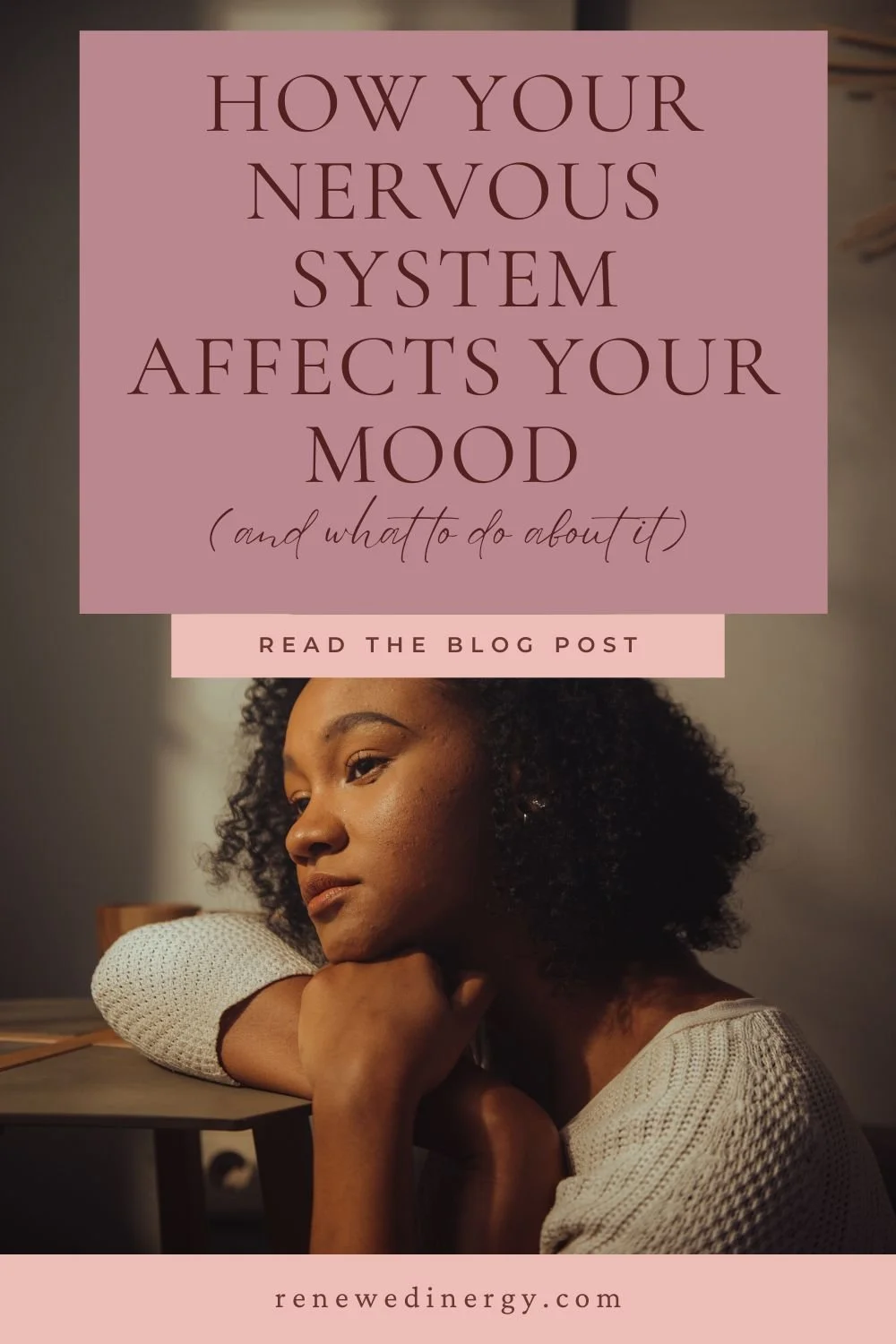Mood Swings and Chronic Illness: Why It Happens and How to Find Emotional Relief Without Shame
It's Not Just in Your Head—It's in Your Biology
If you're living with a chronic illness or autoimmune condition, you already know it’s not just the physical symptoms that wear you down—it’s the emotional rollercoaster, too. One day you're okay, the next you're in tears or snapping at someone you love. Then comes the guilt. The shame. The inner dialogue that whispers, “Why can’t I just get it together?”
Here’s the truth I want you to hear loud and clear:
You are not broken. Mood swings are not a personality flaw. They’re biological signals—honest messages from your nervous system, your hormones, and your immune system.
Your emotional landscape is not separate from your body—it is your body.
In this post, I’ll show you what’s really happening inside your system when mood swings show up—and how to respond with curiosity and compassion, not criticism.
Why Mood Swings Happen in Chronic Illness
As a clinical psychotherapist and somatic practitioner, I’ve seen how chronic illness impacts emotional regulation on every level. When your body is chronically inflamed, hormonally imbalanced,or in a prolonged stress state, your brain chemistry becomes harder to stabilize.
Here’s what’s actually happening:
Cortisol dysregulation: Chronic stress overactivates your adrenal system, disrupting your baseline cortisol levels. The result? Mood swings, poor sleep, heightened anxiety, and difficulty adapting to change.
Neurotransmitter imbalance: Chronic illness often depletes serotonin, dopamine, and GABA—neurochemicals that stabilize mood. This leads to mood swings, irritability, anxiety, and even depressive dips.
Inflammation and the brain: Pro-inflammatory cytokines (tiny immune messengers) can cross the blood-brain barrier and disrupt brain function, leading to emotional reactivity, brain fog, and reduced emotional resilience.
Hormonal shifts (especially in cyclical bodies): Estrogen, progesterone, and testosterone are deeply tied to emotional regulation. For many with chronic illness, hormonal transitions like menstruation, ovulation, perimenopause, or postpartum can intensify symptoms and destabilize mood.
So when you feel emotionally volatile for “no reason,” let this be your reminder::
There is a reason. Your body is speaking in the language of emotion.
The Nervous System’s Role in Emotional Overwhelm
Let’s bring in somatic science: your autonomic nervous system is your emotional command center. It’s responsible for how you perceive threat, manage energy, and recover from stress.
When you're living with chronic illness, your system is often stuck in a state of:
Hypervigilance (fight/flight): everything feels urgent, overwhelming, or overstimulating
Shutdown (freeze/dissociate): emotional numbness, fatigue, or disconnection
This can look like:
Crying easily—or not at all
Feeling “on edge” or emotionally flooded by small things
Losing patience or withdrawing from people
Struggling to calm down or regulate after conflict
This is not a failure of willpower or a mindset issue.
It’s a state shift in your autonomic nervous system, often triggered by inflammation, pain, or unresolved trauma patterns.
Breaking Free from Shame Around Mood
If you’ve ever been told:
“You’re just moody.”
“You’re too sensitive.”
“You need to toughen up.”
I want you to replace that script with this:
Your emotions are data, not drama.
Your mood swings are messages, not misbehavior.
Sensitivity is not weakness—it’s nervous system intelligence.
Shame thrives in silence and self-judgment. But understanding connects. When you begin to view your emotions as biologically rooted, you create space for compassion and healing.
How to Hold Your Emotions with Compassion
You don’t have to suppress your feelings—or get stuck in them. These trauma-informed, somatically groundedpractices are designed to help you regulate in real time.
1. Name it to tame it
Label your emotional state: “I feel anxious,” “I’m overwhelmed,” “I’m irritable.”
Language engages the prefrontal cortex, helping your brain settle.
2. Ground through the body
Return to safety through the senses:
Breathe into your belly
Gently rock side to side
Place a cold object in your hands
Press your feet into the floor with awareness
3. Create emotional boundaries
Your nervous system has limits. Respect them.
Step away from draining conversations or overstimulating environments when needed.
4. Track your cycle
If you menstruate, notice how your mood and energy shift throughout your cycle. Many people with chronic illness notice their emotional resilience drops during the luteal or menstrual phase.
Your emotional needs aren’t the same every day—and that’s okay.
5. Practice compassionate self-talk
Try affirmations like:
“It’s okay to feel this way.”
“This is a signal, not a setback.”
“My body is asking for gentleness.”
These practices—and many more—are part of The Flare Care Protocol, my comprehensive system for emotional regulation, cycle syncing, and nervous system support.
Save This Post for Emotional Self-Care
Understanding your emotions is a radical act of self-love—and a cornerstone of sustainable healing.
Bookmark this post or pin it for those days when you need a reminder:
Mood swings are not shameful. They’re sacred signals from your body asking for care.
Related Reads
What Is a Flare State? Understanding Your Body’s Shutdown Signal
Cycle Syncing for Chronic Illness: How to Support Each Phase
5 Nervous System Soothers for Flare Days
Final Thoughts: You Deserve Gentleness
Your emotional responses are not too much.
Your mood swings are not a weakness.
Your sensitivity is not a flaw—it’s somatic intelligence.
When you stop fighting your emotions and start listening to them, you unlock a deeper, more sustainable form of healing—one that honors the brilliant complexity of your body.
You deserve gentleness—especially from yourself.
Learn More in The Flare Care Protocol
If you're ready to:
Regulate your emotions with nervous system-aligned practices
Support your hormones through each cycle phase
Build a compassionate care system that honors your chronic condition
→ Explore The Flare Care Protocol
